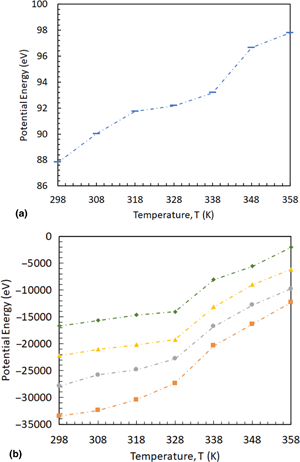Article contents
Thermal transport properties enhancement of paraffin via encapsulation into boron nitride nanotube: a molecular dynamics study
Published online by Cambridge University Press: 25 June 2020
Abstract

This research investigates a novel composite of encapsulated paraffin in boron nitride nanotube (BNNT) which is more thermally and chemically stable than carbon nanotube. This composite can achieve high thermal conductivity and, meanwhile, have thermal energy storage capability for efficient thermal management under extreme conditions. Equilibrium molecular dynamics simulations were conducted to study self-diffusion coefficient, thermal conductivity, and specific heat of encapsulated paraffin. The simulation results indicated that the self-diffusion coefficient and thermal conductivity of paraffin could be increased by up to 10 and 7 times, respectively, while specific heat was reduced after encapsulating into BNNT.
- Type
- Research Letters
- Information
- Copyright
- Copyright © Materials Research Society, 2020
References
- 7
- Cited by





